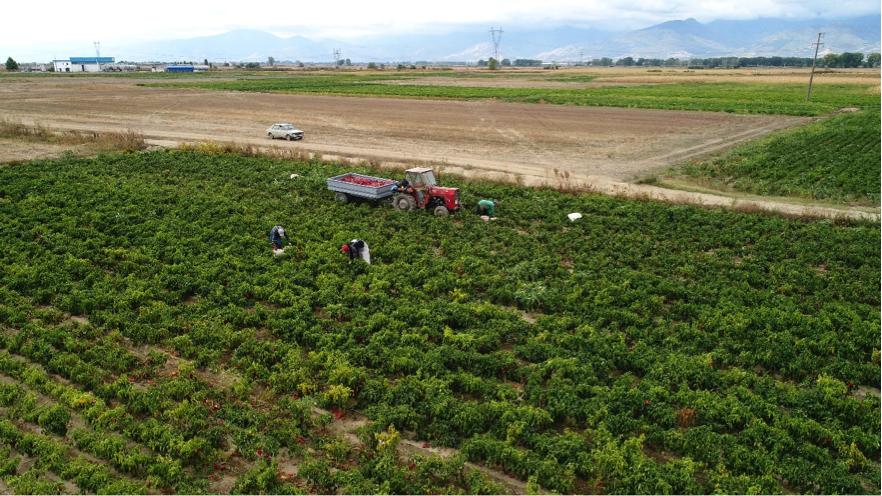The increasing number of salmon in the Skjern River in Denmark is a positive sign, as the Danish salmon is the only strain of wild salmon left in Danish rivers. Before the Skjern River Nature Restoration Project, the salmon had almost gone extinct owing to the state of the environment. The project area now offers ideal conditions for flora and fauna and has already acquired great natural value. In fact, it has already grown into a bird site of national importance. Birds began arriving by the thousands almost as soon as the excavators left the area. At the same time farmers are happy with the outcome of the project. Voluntary land consolidation resulted in agreement for 99% of the project area. Many of the landowners benefitted highly from the land consolidation solutions as they were often able to exchange relative small parcels with drainage problems, sometimes more than 10 km from the homestead with arable land without drainage problems much closer to the homestead.
The Skjern River Nature Project, completed in 2002, is one of the largest restoration projects in northern Europe and it is a good example of multi-purpose land consolidation. Meanwhile, land consolidation practices in Western Europe between 1950 to the 1970s, still set the tone in many debates on land consolidation. Creating a functional landscape for agriculture with the help of land consolidation proved to be effective to support food security in many countries in Western Europe. However, applied without due considerations of environment, it also imposed negative effects for other functions, which rural areas hold such as biodiversity.
Many policy and opinion makers can still reason that land consolidation by nature is bad for biodiversity and landscapes. In our understanding, it really depends on how the land consolidation instrument is applied and on the system of safeguards it adopts. Furthermore, we believe that land consolidation is actually an instrument ideally suited for an integral approach, whereby all land use functions in the area can be considered in coherence.

From the 1980s onwards, countries in Western Europe with a longer history in land consolidation, have broadened the objectives of land consolidation and developed it into a powerful multi-purpose instrument to ensure sustainable development. Comprehensive development of rural territories including many measures like landscape- and nature restoration would not have happened without this broadened policy view.
Nowadays, many countries across the world face severe challenges in rural areas. Due to urbanization, some areas face depopulation, agricultural land is left fallow and facilities and services disappear. Other rural areas are severely affected by the negative effects of climate change. Longer periods of drought combined with a lack of sufficient water sources, negatively affect both agriculture and nature. The question is how can land consolidation contribute to addressing rural development challenges and counteract climate change induced impacts?
Firstly, by optimizing the spatial arrangement of parcels and by providing land for the implementation of various measures and plans; and secondly, by serving as a mechanism which can effectively integrate and coordinate implementation of these measures. If, for example, privately owned agricultural land is planned to be taken out of production as part of a climate change project (or for construction of water retention, afforestation, nature conservation, for new landscape elements), land consolidation and land banking instruments can be used to facilitate the process by compensating private landowners and farmers with land, instead of a monetary compensation and in this way avoid destroying the farm structures and endangering the livelihoods of the affected farm households.
Depending on the experiences one has with land consolidation, viewpoints may vary considerably from one person to the other. To start a discussion, we would like to hear your stories, to share experience and to stimulate the debate on the multi-purpose land consolidation!



